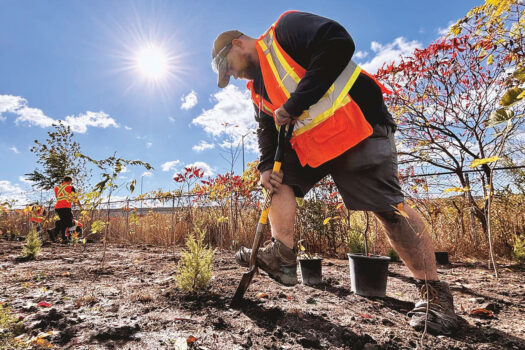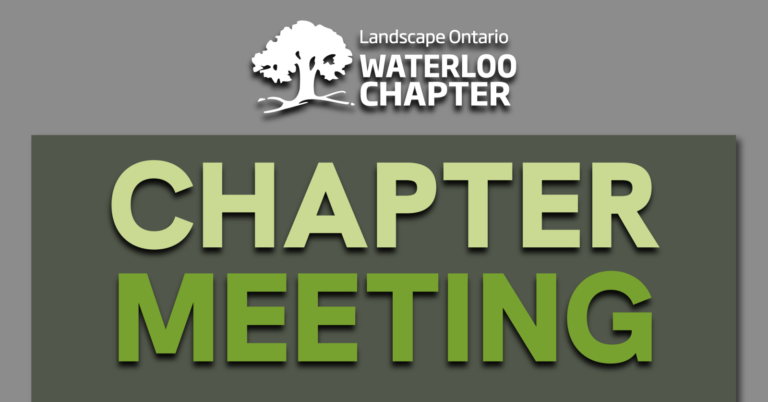By Peter Purvis
Guelph Turfgrass Institute, and
Pam Charbonneau
OMAFRA Turfgrass Specialist
The objective of this study was to determine the efficacy of four bio-controls (Bacillus thuringiensis kurstaki; Neu1138I; Neu1161I; and entomopathogenic nematodes) and one reduced risk insecticide (Acelepryn) for the control of early instar leatherjackets larvae. Treatments were applied on Nov. 4, 2011 onto areas known to have previous leatherjacket infestations.
Results of this study showed that three weeks after treatment, Bacillus thuringiensis kurstaki, entomopathogenic nematodes and Neu1138I were effective in reducing the populations of first and second instar leatherjackets larvae, compared to the untreated control. The level of control among those three treatments did not differ significantly from each other and ranged from 55, 57.5 and 62 per cent of the control, respectively.
At six weeks after treatment, only the entomopathogenic nematodes and Neu1161I were effective in reducing the populations of first and second instar leatherjackets larvae, compared to the untreated control. The level of control among those two treatments did not differ significantly from each other and ranged from 50 to 70 per cent of the control, respectively. None of the bio-controls or the reduced risk product resulted in phytotoxicity to the turf at one or seven days after treatment.
Efficacy of biocontrols and reduced risk insecticide for European chafer grubs
Since the passing of the Cosmetic Pesticides Ban Act in 2009, the lawn care sector has has had great interest in testing bio-controls and reduced risk pesticides to control insect pests, such as leatherjackets (Tipula paludosa). It is well documented that most bio-pesticides are efficacious on early instar insect larvae. These reduced risk pesticides have been used for the control of European chafer grubs, but there is limited data on its efficacy to control leatherjackets. Research was conducted to compare bio-controls and a reduced risk pesticide to control early instar leatherjackets.
The objective of the project was to determine the efficacy of fall applied bio-controls (Bacillus thuringiensis kurstaki; Neu1138I; Neu1161I; and entomopathogenic nematodes (EPN’s; which were a 50/50 mixture of Steinernema feltiae) and a reduced risk insecticide (Acelepryn) for the control of early instar leatherjackets on a mixed stand of turf maintained as a home lawn.
This experiment was conducted on plots of a mixed stand of turf (Kentucky bluegrass, perennial ryegrass and creeping bentgrass maintained as a home lawn) on the native soil rootzone at the Guelph Turfgrass Institute. The turf was maintained at seven cm mowing height and fertilized with 2 kg actual N 100 sq. m yr-1.
The experimental plots were arranged in random block design with six replications of each treatment. Plots were 1 m x 2 m (2 sq. m). Each block was established separately on areas of turf with previously known infestations of leatherjackets. Treatments are as indicated in Table 1.
All treatments were applied on first and second instar stages of leatherjackets (Nov. 4, 2011). Treatments 2, 3, 4 and 5 were applied using a compressed air sprayer (20 psi) with Teejet orange flat fan nozzles. Treatment 6 was applied using a five litre watering can. The total spray water volume for treatments 2, 3, 4 and 5 was 10 L per 100 sq. m (100 mL/ sq. m) and 200 L per 100 sq. m (2000 mL/ sq. m) for Treatment 6 to ensure delivery to the pest location. Treatments 2, 3 and 6 were watered in with 250L per 100 sq. m of water post-treatment. Treatments 4 and 5 were not watered in, as recommended by the registrant (Neudorff Canada).
Efficacy assessments
Larvae were recovered from each plot by direct harvest from four cup-cutter cores (0.1 m diameter x 0.05 m depth) removed in a random pattern on Nov. 25, 2011 (three weeks after treatment [3 WAT]) and on Dec. 16, 2011(6 WAT). Larval counts were determined from the untreated control of each of the six replications. Replicates 2, 5 and 6 had zero larvae per cup changer, therefore those replicates were discarded from the experiment. Larval counts were done only on Replicates 1, 3 and 4 (3 WAT and 6 WAT). Leatherjackets population densities were reported as larvae per cup changer core and per sq. m.
There was no insect damage to the turf detected at any time prior to, or after treatment application. Plots were assessed at one and seven days after treatment (DAT) for phytotoxicity effects of the insecticide treatments on the turf. None were detected.
There were significant differences among the treatments for larvae counts. Results of the treatments at the 3 WAT and 6 WAT are shown in Table 2.
At 3 WAT, Bacillus thuringiensis kurstaki, EPN’s and Neu1138I were effective in reducing the populations of first and second instar leatherjackets larvae compared to the untreated control. The level of control amongst those three treatments did not differ significantly from each other (ranging from 55, 57.5 and 62 per cent of the control respectively).
At 6 WAT, only the EPN’s and Neu1161I were effective in reducing the populations of first and second instar leatherjackets larvae compared to the untreated control. The level of control between those two treatments did not differ significantly from each other (ranging from 50 and 70 per cent of the control respectively).
None of the experimental bio-control products resulted in phytotoxicity to the turf at 1 or 7 DAT.
The authors thank the Agricultural Adaptation Council and the Ontario Turfgrass Research Foundation for support for this study. They also thank Valent Canada for supplying the Bacillus thuringiensis kurstaki (DiPel2X), Neudorff Canada for supplying Neu1138I and Neu1161I and Natural Insect Control for supplying the EPN’s (Steinernema feltiae and Heterorhabditis bacteriophora) for this experiment. The authors thank Shahram Sharififar from Natural Insect Control for assistance in applying the nematodes, Erica Gunn for assistance with direct harvesting leatherjackets from cores for post-treatment assessments, and Dr. Ken Carey for assistance with the statistical analysis.
Treatments (Table 1)
| Treatment 1 | Untreated Control |
| Treatment 2 | Acelepryn at 0.58 g a.i. 100 sq. m |
| Treatment 3 | Bacillus thuringiensis kurstaki at 2.85 g a.i. 100 sq. m5 |
| Treatment 4 | Neu1138I (2.5% solution) 2.5 mL 100 sq. m |
| Treatment 5 | Neu1161I (2% solution) 2.0 mL 100 sq. m |
| Treatment 6 | Entomopathogenic nematodes (EPNs) (a 50/50 mixture of Steinernema feltiae and Heterorhabditis bacteriophora) at two million ij (infective juveniles) 100 sq. m |
Post-treatment larval counts (Table 2)
| Treatment number | Treatment | 3 WAT (Nov. 25, 2011) | 6 WAT (Dec. 16, 2011) |
| Larvae/core(1) | Larvae/ sq. m | Larvae/core | Larvae/ sq. m | ||
| 1 | Control | 7.25(2)a | 837.73a | 5.25a | 606.64a |
| 2 | Acelepryn | 4.42ab | 510.38ab | 3.42ab | 394.80ab |
| 3 | Neu1161I | 4.42ab | 510.38ab | 1.58b | 182.95b |
| 4 | Bacillus thuringiensis kurstaki | 3.25b | 375.54b | 3.08ab | 356.24ab |
| 5 | EPN’s | 3.08b | 356.24b | 2.58b | 298.50b |
| 6 | Neu1138I | 2.75b | 317.76b | 3.08ab | 356.24ab |
(1) Mean number of larvae per four cores.
(2) Mean values from Fishers’ protected LSD tests. Means with the same letters are not significantly different.






